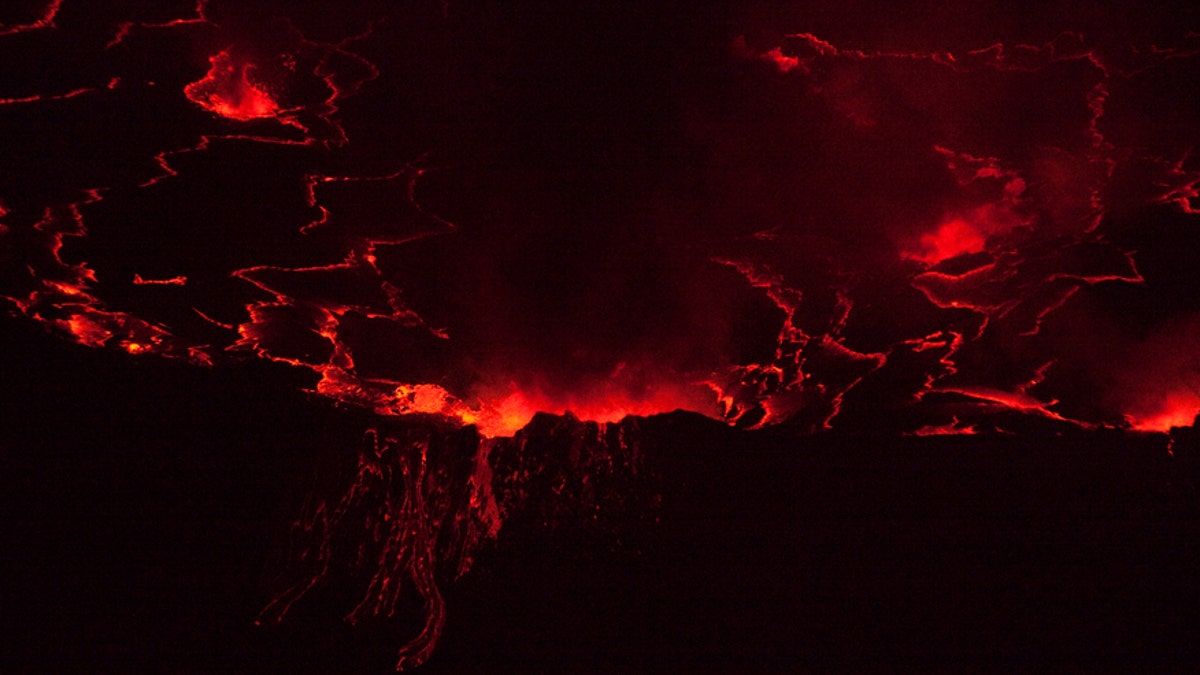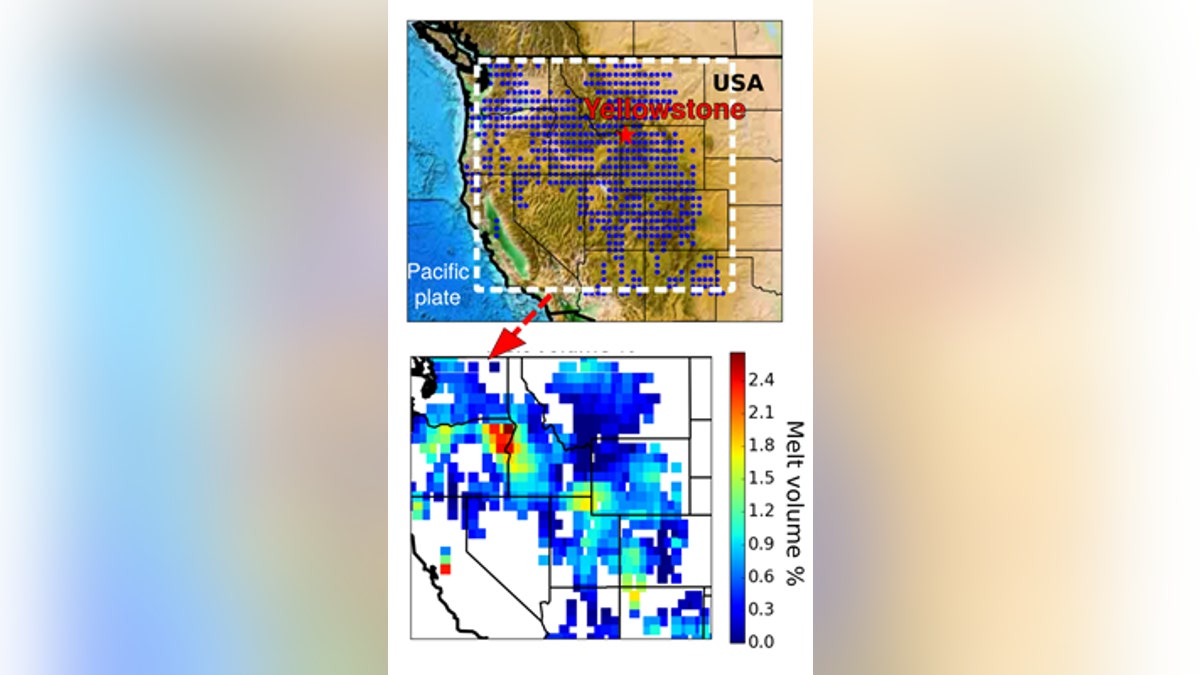
File photo - A lava lake with a diameter of 500 feet glows at night in the crater of Nyiragongo volcano near Goma in eastern Congo, Aug. 30, 2010. (REUTERS/Finbarr O'Reilly)
Scientists have discovered a huge reservoir of molten carbon deep beneath the western U.S.
The research, which was conducted by geologists at the Department of Earth Sciences at Royal Holloway, University of London in the U.K., located the deep-Earth area of melting carbon that spans almost 695,000 square miles.
Experts harnessed the world’s largest array of seismic sensors to map the vast reservoir, which is 217 miles below the Earth’s surface, according to Royal Holloway. The 583 sensors measured the Earth’s vibrations to create a picture of the area’s deep sub surface.
FIRST CAME A 'CATASTROPHIC COLLAPSE,' THEN A TSUNAMI
The study, which is published in Earth and Planetary Science Letters, indicates that the Earth contains much more carbon than was previously thought.
“It would be impossible for us to drill far enough down to physically ‘see’ the Earth’s mantle, so using this massive group of sensors we have to paint a picture of it using mathematical equations to interpret what is beneath us,” said Dr. Sash Hier-Majumder of Royal Holloway, in a statement. “Under the western US is a huge underground partially-molten reservoir of liquid carbonate. It is a result of one of the tectonic plates of the Pacific Ocean forced underneath the western USA, undergoing partial melting thanks to gasses like CO2 and H2O contained in the minerals dissolved in it.”

Map showing area of discovery (Royal Holloway, University of London).
As a result of the study, scientists now understand that the amount of carbon dioxide in the Earth’s upper mantle, which forms most of the Earth’s exterior, may be up to 100 million metric tons.
DEFORESTATION IN BRAZIL INCREASED 30% IN 12 MONTHS, AGENCY SAYS
By way of comparison, the U.S. Environmental Protection Agency estimated that global carbon emission in 2011 was nearly 10 billion metric tons. The carbon reservoir will eventually make its way to the surface through volcanic eruptions, slowly contributing to climate change, according to Royal Holloway.
“We might not think of the deep structure of the Earth as linked to climate change above us, but this discovery not only has implications for subterranean mapping but also for our future atmosphere,” said Dr Hier-Majumder, in the statement. “For example, releasing only 1% of this CO2 into the atmosphere will be the equivalent of burning 2.3 trillion barrels of oil. The existence of such deep reservoirs show how important is the role of deep Earth in the global carbon cycle.”




















